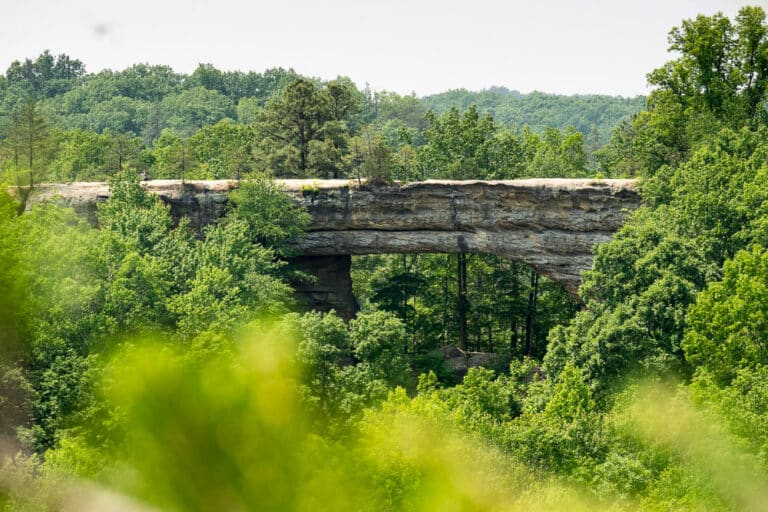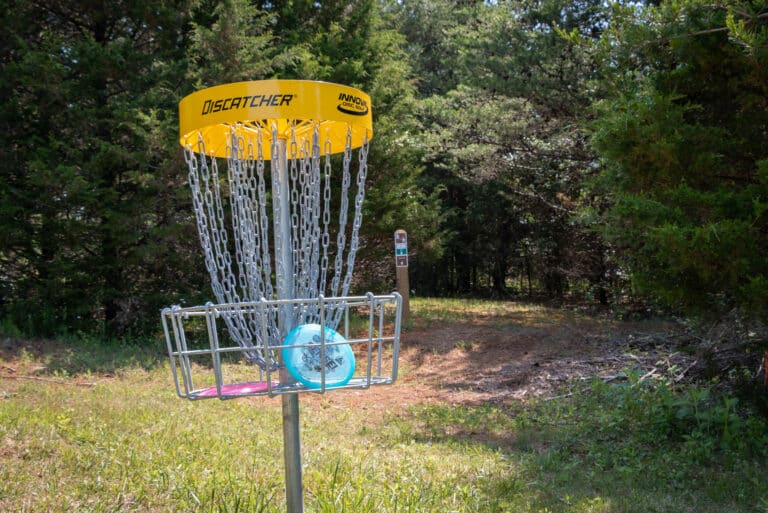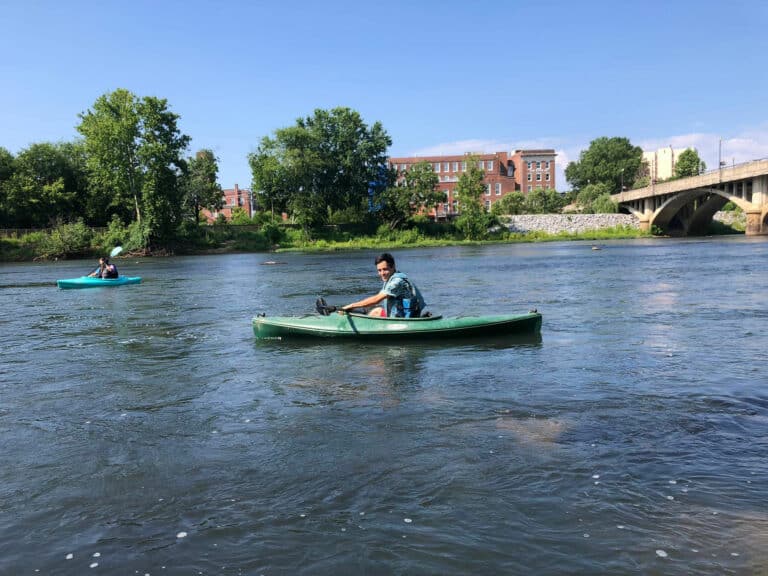by Erik Schlimmer
The term “fastpacking” often conjures up images of Spandex-clad extreme athletes scurrying around, running out of food, getting lost, freezing at night and having an overall miserable, spartan experience (while having no money left over because they bought expensive lightweight gear). What I discovered on a southern Appalachian sojourn was that fastpacking is a lot easier, more relaxing, and more enjoyable than you might think.
Fastpacking is simply about thinking about what you bring-and don’t bring. As I prepared for my hike, the three fastpacking questions I asked to ensure a sensible load were:
1. Will I use each item at least once a day? (my first aid kit and one insulating layer were void from this question)
2. With modest financial means, can I purchase an item that’s lighter than the one I have?
3. Do I need to bring this item, or do I simply want to bring this item?
For fastpackers, the answers should be, “yes,” “yes,” and “need.”
After the preliminary Q and A session, my pack weight- the weight of my pack with everything inside except food and water- tipped the scales at a feathery 10.4 pounds, 22.9 pounds less than a traditional backpacking load (see sidebars).
I had only three vacation days to work with, and I wanted to cram them with the finest in fastpacking fun. So I mapped out one of the toughest treks in the Southern Appalachians-a 72-mile sinuous loop through Great Smoky Mountains National Park. that incorporated sections of the Appalachian Trail and Benton MacKaye Trail, traversed 18 rugged 5,000-foot peaks, and included 17,500 feet of climbing.
Starting in the northeast corner of the Smokies, I began the trek up to Cammerer Ridge. Ascending six miles to its high point in less than three hours, my pace doubled what many Appalachian Trail thru hikers I met were covering that day. Shadowed by their 5,000-cubic-inch internal frame packs, most other hikers I met looked like mountaineers loaded down with a hundred pounds of high-altitude gear, on their way up an 8,000-meter peak in the Himalayas.
I continued south on the A.T. at a fresh pace, enjoying bushwhacking side trips up trail-less Sunup Knob and Cosby Knob, whose untrammeled summits were very friendly by Southern standards. Unlike these two fine mountains, most trailless Southern peaks guard their apexes with choking rhododendron and laurel thickets, deep, dark stands of spruce and fir, and briars that can shred work pants like a wildcat on acid.
The next stop was the first 6,000-footer of the trip-Old Black-named for its expansive stands of black spruce. After touching the summit cairn on Old Black I headed south under my light load, bound for the highest trailless peak in the East, Mount Guyot. Named in the mid-1800’s for the indefatigable explorer and scientist Arnold Guyot, this 6,621-foot behemoth offered a stout challenge with acres of briars growing above stacks of sun-bleached blowdown. That evening, I reached my campsite more than 22 miles from the start of the day, ready for dinner.
You simply can’t help but draw attention to yourself when you cook dinner on the skeleton of a tuna can. Weighing less than one ounce, the tuna can stove is the epitome of simplicity and my favorite piece of gear. Drop one half-ounce solid fuel tablet in the can, light it, set your pot on top and watch the silent blue flame work water to a boil. Ten minutes later-voila!-dinner is served.
After dinner I removed the back pad from my pack and set it on the lean-to floor where my back would rest. Below it went my empty pack to cushion my legs while up top I stacked extra clothing to form a makeshift pillow. While my backcountry campmates hobbled around with bruised hip bones, sore shoulders and blistered feet, organizing their enormous piles of gear, I dozed off in my one-pound sleeping bag free from the nightmare of donning a heavy pack at dawn.
Since I don’t cook breakfast-to lessen my fuel burden and to get an early start-day two was launched by 8am with a climb of Mount Chapman, a lonely briar-covered hill that gave a nice view back to Mount Guyot. Continuing at a steady two to three-miles-an-hour, I climbed two more high peaks before 10am: Mount Sequoyah and Eagle Rocks.
As the day progressed I met more AT hikers bound for the trail’s northern terminus more than 1,500 agonizing miles away. Those that were hiking stopped and asked how early I got going to be twenty miles from the nearest trailhead. With a respectful response, I let them know I wasn’t day-hiking but on a three-day trip where all my gear fit snugly into my little pack, which hovered airily on my back.
But to be honest, the majority of backpackers I met were not hiking. They were resting. With packs that mirrored the dimensions of yurts, collapsed swimming pools, and inflatable life rafts more than something you would want on your back all day, the weary adventurers I met eyed my pack and my 72-mile, 3-day itinerary with distrust, not believing that a backpacker could cover 24 miles and be able to walk the day after.
By noon I was done weaving through the slalom course of sidelined A.T. hikers and left the Appalachian Trail. Now southbound on Hughes Ridge Trail, I stopped to gather water below the Pecks Corner shelter, a well-built stone-walled structure set in the midst of a hardwood forest, which strained sunlight through its canopy, creating a tapestry of shadow and light on the green forest floor. Filling my lighter-than-Lexan soda bottles with clear, cold water from a rust-brown pipe, I dropped a tiny iodine tablet into each bottle and paused at the shelter to read the log book. Page after page told war stories of “exhausted” and “spent” thru-hikers stumbling into the Pecks Corner shelter at dusk after covering a sunup-to-sundown 13 miles. I imagined their crushing loads: packs filled with item after item, ready to burst at the seams, merciless, near-literal monkeys on their backs.
All was going well until the hike from hell: Highland Ridge. At 5,166 feet, Highland Ridge is the quintessential example of why no one bushwhacks down South. My journal entry recorded the heath and greenbriar-laden off-trail ascent as “one of the most miserable hikes of my life” and a “death zone,” among other choice unprintable narratives.
After an equally horrendous descent off Highland Ridge I reached my second campsite at dusk with more than 38 of my 72 miles completed. I laid on the ground that night, at least thankful for my light pack, while the bottomless black night became framed by an amphitheater of white and blue stars.
With two days’ worth of food gone by day three, my pack was truly a day hiker’s load. I flew down trails like a man that didn’t even have a pack on. Before noon I rolled into the Laurel Top Shelter for more water and a short respite. With a Southern drawl, a man resting in the shelter greeted me. “Hey there. Man, that’s a small pack. Or, more accurately, that’s a pack that ain’t got much in it.” After my short list of items was given, he stared at his sizeable pack, then back at mine, and fell into thought. With a friendly tone he concluded with a wink, “Guess I like the creature comforts.”
I departed the shelter and sped along, my two-pound sneakers gripping mud and rock, to reach the last two peaks of the trip: Big Cataloochee Mountain and Luftee Knob. I ended up covering 27.8 miles and climbed an ear-popping 7,000 vertical feet my last day,
At the parking area where I started three days earlier, I stared into the forest and thought back to Old Black, Mount Guyot, Highland Ridge and a host of other peaks, as well as the exhausted backpackers I met who rested at vistas, hoping their sweat-stained loads would roll off the edge of a cliff and into oblivion. But quite the contrary, I couldn’t wait to put my pack back on, for I knew I’d be back in the high peaks of the South again, using fine fastpacking style.
<hr size=”1″ color=”#000″ width=”100%”/>
Fastpacking Gear List
Traditional backpackers carry about 33 pounds of gear, which is 22% of the overall weight of a 150-pound hiker. Fastpackers carry around 10 pounds of gear, which is less than 7% of a 150-pound hiker’s overall weight. Two-thirds less weight means less strain on the body, a more enjoyable hiking experience-and usually, more mileage covered in a shorter period of time. Here’s a look inside Schlimmer’s pack during his Smokies sojourn:
Product
1. Wild Things 2,800-cubic-inch day pack
(removable sleepingpad, lid and excess straps cut off), garbage bag liner
2. Western Mountaineering Hi Lite 35° sleeping bag, stuff sac
3. Gossamer Gear 32-inch by 96-inch polycryo ground sheet
4. Equinox 6-foot by 8-foot silicone-nylon tarp, 25 feet of cord
5. Eastern Mountain Sports Primaloft vest
6. Eastern Mountain Sports lightweight thermal bottoms
7. Eastern Mountain Sports midweight thermal top
8. Marmot Precip jacket
9. Synthetic winter hat
10. One pair Smartwool hiking socks
11. Eight Esbit solid fuel tablets, plastic bag
12. Drilled out tuna can pot supporter, one-quart pot, aluminum foil lid
13. Two Lexan spoons, pot grip, two lighters, stuff sac
14. Two 32-ounce soda bottles, bottle of iodine tablets
15. Bag of goodies (toothbrush, first aid items, etc), stuff sac
16. Black Diamond LED headlamp with battery
17. Two USGS topographic maps, National Geographic overview map, Silva Ranger compass, plastic bag
18. Journal, golf pencil, plastic bag
19. Camera, one roll of film, old sock for camera case
20. Six baby wipes, plastic bag(10.3 pounds). 6.9% of a 150-pound hiker







